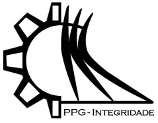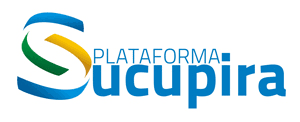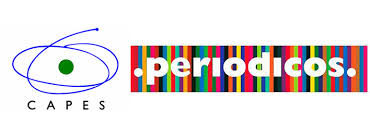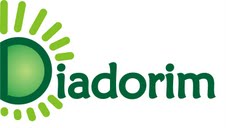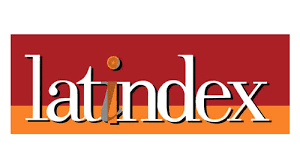A Numerical Study of Aerodynamic Coefficients of a Ground Vehicle
Keywords:
Ahmed body, CFD, k-w SST, Q-criterion, skin friction factorAbstract
The objective of the present paper is to evaluate the turbulent flow around the Ahmed body immersed in air and to determine its aerodynamic coefficients for different slant angles. The bidimensional non-stationary analysis of an incompressible flow around the Ahmed body is carried out for three different rear angles which are 0°, 10° and 25°. The numerical simulations were performed under the same Reynolds number, Rel = 94 000, based on the free streamwise velocity, u∞, the longitudinal length of the Ahmed body, l, and the kinematic viscosity of the work fluid, ν. The additional diffusivity caused by the turbulent motion was approached using the Boussinesq’s idea through the k-ω SST. In the paper, aerodynamic coefficients of drag and the pressure and velocity fields are presented to characterize the Ahmed body for such slant angles, as well as the flow detachment point, determined through the dimensionless skin friction factor distribution on the body’s surface. Numerical simulations were compared with available results in open literature and showed agreement with other authors. The drag coefficient in the body with slant angle of 25° was found to matches with the drag coefficient equation proposed by Bello-Millán et al. (2016) as a function of Reynolds number.
References
Bello-Millán, F. et al. “Experimental study on Ahmed’s body drag coefficient for different yaw angles”. Journal of Wind Engineering and Industrial Aerodynamics, Elsevier 2016, v. 157, p. 140”“144.
Ortega, J. M.; Salari, K. “Aerodynamic drag reduction apparatus for wheeled vehicles in ground effect”. [S.l.]: Google Patents, US Patent 6,974,178, 2005.
Tunay, T.; Sahin, B.; Ozbolat, V. “Effects of rear slant angles on the flow characteristics of Ahmed body”. Experimental Thermal and Fluid Science, Elsevier 2014, v. 57, p. 165”“176.
Hucho, W. H. “Aerodynamics of road vehicles: from fluid mechanics to vehicle engineering”. [S.l.]: Elsevier, 2013.
Daugherty, R. L. “Fluid mechanics with engineering applications”. [S.l.]: Tata McGraw-Hill Education, 1989.
Ahmed, S. R.; Ramm, G.; Faltin, G. “Some salient features of the time-averaged ground vehicle wake”. SAE Transactions 1984, JSTOR, p. 473”“503.
Korkischko, I.; Meneghini, J. R. Investigação experimental e simulação numérica do escoamento ao redor de um modelo automobilístico: corpo de Ahmed. Trabalho de conclusão de curso em Engenharia Mecânica apresentado à Escola Politécnica da Universidade de São Paulo, 2006.
Menter, F. R. “Two-equation eddy-viscosity turbulence models for engineering applications”. AIAA journal 1994, v. 32, n. 8, p. 1598”“1605.
Severino, H. A., De Melo, T., & Goulart, J. N. Hot wire anemometry and numerical simulation applied to the investigation of the turbulence in a gap flow. In Proceedings of the European Congress on Computational Methods in Applied Sciences and Engineering 2018. Glasgow, UK.
Bruneau, C. H., Creusé, E., Gilliéron, P., & Mortazavi, I.“Effect of the vortex dynamics on the drag coefficient of a square back Ahmed body”: European Journal of Mechanics-B/Fluids 2014, Vol 45, 1-11.
Shadmani, S., et al. "Experimental investigation of flow control over an Ahmed body using DBD plasma actuator." Journal of Applied Fluid Mechanics 2018, 11.5: 1267-1276
Hunt, J. C. R., Wray, A. A. and Moin, P. “Eddies, Streams, and Convergence Zones in Turbulent flows,” Center for Turbulence Research Report CTR-S88 1988, Stanford Univ., pp. 193”“207.
Goulart, Jhon, Jan G. Wissink, and Luiz C. Wrobel. "Numerical simulation of turbulent flow in a channel containing a small slot." International Journal of Heat and Fluid Flow 61 (2016): 343-354.
Candela, Diana Sandoval, et al. "Numerical simulation of turbulent flow in an eccentric channel." European Journal of Mechanics-B/Fluids (2020).
Ferrari, J., Goulart, J., & Souza, S. “Numerical Prediction of Pressure Drop and Laminar Instabilities in Fully-Developed Flow in a Closed Compound Channel”. ECCOMAS 2016.
Zhang, B. F., Y. Zhou, and S. To. "Unsteady flow structures around a high-drag Ahmed body." Journal of Fluid Mechanics 2015, 777: 291-326.
Möller, S.; Silvestrini, J. “Turbulência: fundamentos”. Coleçao Cadernos de Turbulência. ABCM. Rio de Janeiro, v. 4, p. 1”“32, 2004.
Minguez, M., R. Pasquetti, and E. Serre. "High-order large-eddy simulation of flow over the “Ahmed body” car model." Physics of fluids 2008, 20.9: 095101.
Thacker, A. et al. “Effects of suppressing the 3d separation on the rear slant on the flow structures around an Ahmed body”. Journal of Wind Engineering and Industrial Aerodynamics, 2012, Elsevier, v. 107, p. 237”“243.
Dobrev, I.; Massouh, F. “Investigation of relationship between drag and lift coefficients for a generic car model”. BULTRANS Proceedings 2014.
Rafee, P. Moghimiand R. "Numerical and Experimental Investigations on Aerodynamic Behavior of the Ahmed Body Model with Different Diffuser Angles." Journal of Applied Fluid Mechanics 2018, 11.4: 1101-1113.
Downloads
Published
Issue
Section
License
Copyright (c) 2021 Revista Interdisciplinar de Pesquisa em Engenharia

This work is licensed under a Creative Commons Attribution-NoDerivatives 4.0 International License.
Given the public access policy of the journal, the use of the published texts is free, with the obligation of recognizing the original authorship and the first publication in this journal. The authors of the published contributions are entirely and exclusively responsible for their contents.
1. The authors authorize the publication of the article in this journal.
2. The authors guarantee that the contribution is original, and take full responsibility for its content in case of impugnation by third parties.
3. The authors guarantee that the contribution is not under evaluation in another journal.
4. The authors keep the copyright and convey to the journal the right of first publication, the work being licensed under a Creative Commons Attribution License-BY.
5. The authors are allowed and stimulated to publicize and distribute their work on-line after the publication in the journal.
6. The authors of the approved works authorize the journal to distribute their content, after publication, for reproduction in content indexes, virtual libraries and similars.
7. The editors reserve the right to make adjustments to the text and to adequate the article to the editorial rules of the journal.


